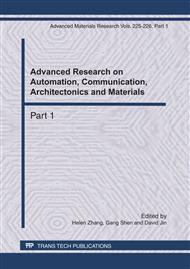p.953
p.957
p.961
p.966
p.970
p.974
p.978
p.982
p.987
A Trace Inequality for Symmetric Nonnegative Definite Matrices
Abstract:
Trace inequalities naturally arise in control theory and in communication systems with multiple input and multiple output. One application of Belmega’s trace inequality has already been identified [3]. In this paper, we extend the symmetric positive definite matrices of his inequality to symmetric nonnegative definite matrices, and the inverse matrices to Penrose-Moore inverse matrices.
Info:
Periodical:
Pages:
970-973
Citation:
Online since:
April 2011
Authors:
Price:
Сopyright:
© 2011 Trans Tech Publications Ltd. All Rights Reserved
Share:
Citation:


